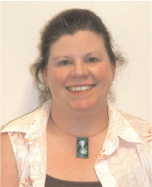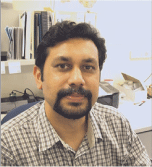Unconventional petroleum resource evaluation in Queensland
Alison Troup A , Melanie Fitzell B , Sally Edwards A , Owen Dixon A and Suraj Gopalakrishnan AA Geological Survey of Queensland.
B Comet Ridge Limited.
The APPEA Journal 53(2) 471-471 https://doi.org/10.1071/AJ12082
Published: 2013
Abstract
The search for unconventional petroleum resources requires a shift in the way the petroleum potential of sedimentary basins is assessed. Gas in source rocks and tight reservoirs has largely been ignored in preference for traditional conventional gas plays. Recent developments in technology now allow for the extraction of gas trapped in low-permeability reservoirs.
Assessments of the unconventional petroleum potential of basins, including estimates of the potential resource are required to guide future exploration. The Geological Survey of Queensland is collaborating with Geoscience Australia (GA) and other state agencies to undertake regional assessments of several basins with potential for unconventional petroleum resources in Queensland. The United States Geological Survey methodology for assessment of continuous petroleum resources is being adopted to estimate total undiscovered oil and gas resources.
Assessments are being undertaken to evaluate the potential of key formations as shale oil and gas and tight-gas plays. The assessments focus on mapping key attributes including depth, thickness, maturity, total organic carbon (TOC), porosity, gas content, reservoir pressure, mineralogy and regional facies patterns using data from stratigraphic bores and petroleum wells to determine play fairways or areas of greatest potential.
More detailed formation evaluation is being undertaken for a regional framework of wells using conventional log suites and mudlogs to calculate porosity, TOC, maturity, oil and gas saturations, and gas composition. HyLoggerTM data is being used to determine its validity to estimate bulk mineralogy (clay-carbonate-quartz) compared with traditional X-ray diffraction methods. These methods are being applied to key formations with unconventional potential in the Georgina and Eromanga basins in Queensland.

Alison Troup graduated from UQ with a BSc (honours)(geology) in 2009. She joined GSQ as a graduate geoscientist in the energy geosciences group in 2010. Since joining GSQ, she has participated in the North West Queensland Minerals and Energy Province report and the Coastal Geothermal Energy Initiative drilling program. She is now involved in assessing unconventional petroleum resources in Queensland. |

Melanie Fitzell graduated with a BSc (honours) (Earth science) from UQ in 2002 and joined GSQ as a graduate geologist. During her tenure at GSQ, she worked on multiple geological and mineral mapping projects before focusing on petroleum and energy geosciences projects including a regional geothermal drilling program and resource assessment and evaluation of unconventional petroleum resources in Queensland. In 2012, she joined Comet Ridge Limited as a senior geologist and is now working on CSG exploration projects in Queensland and NSW. |

Sally joined GSQ in 2012 after several years with CO2CRC where she worked on site evaluation and assessment studies. She holds an MSc from James Cook University (JCU) and is working on completing her PhD at the Australian School of Petroleum, University of Adelaide. Her interests are basin evaluation and reservoir analysis. She is now involved in evaluating unconventional resources in Queensland. |

Owen Dixon is a senior geophysicist with GSQ, specialising in seismic interpretation for basin analysis. He has extensive experience in engineering geophysics, gravity surveys, regional seismic acquisition, processing and interpretation, well logging, basin analysis and data management. |

Suraj obtained a PhD (geology) from the University of Kerala, India, before moving to the University of Tokyo, Japan, on a JSPS post-doctoral fellowship. He spent six years studying zeolites and associated microporous materials and their application to the modern energy economy. After three years of research associateship at UQ, he joined GSQ in 2009 and took charge of the new HyLogger Technology, a spectroscopic method to determine the mineralogy of drill cores, as part of the federally funded National Virtual Core Library (NVCL) project. |
References
Boreham, C., 2012—Gas composition results, Appendix 11. In: Faulkner, S.P., Maxwell, M., O’Connor, L.K., Sargent, S.N., and Talebi, B. Coastal geothermal energy initiative GSQ Julia Creek 1: well completion report and heat flow modelling results. Queensland Geological Record 2012/05, unpublished.Charpentier, R.R., and Cook, T.A., 2011—USGS Methodology for assessing continuous petroleum resources. U.S. Geological Survey Open File Report 2011-1167, unpublished.
Fitzell, M.J., Troup, A., Dixon, O., Edwards, S., and Gopalakrishnan, S., 2012—Unconventional resource assessment of the Toolebuc Formation. Eastern Australian Basins Symposium IV, Brisbane, Australia, 11–12 September.
Gaddy, D., Mcdonagh, G., and Zerbrowitz, M., 1998—A-P 529P,EEARodneyCreek3, Well Completion Report. Well completion report held by Queensland Department of Natural Resources and Mines under report number CR29930, unpublished.
Haworth, J.H., Sellens, M.P., and Gurvis, R.L., 1984—Reservoir characterisation by analysis of light hydrocarbon shows. SPE Rocky Mountain Regional Meeting, 21–23 May, 12914.
Hawkins, P.J., Smith, R.J., and Genn , D.L.P., 1991—Organic maturation of Jurassic units, northern Eromanga Basin. Queensland Geological Record 1991/28, unpublished.
Passey, Q.R., Creaney, S., Kulla, J.B., Moretti, F.J., and Stroud, J.D. (1990). A practical model for organic richness from porosity and resistivity logs. The American Association of Petroleum Geologists Bulletin 74, 1777–94.
Schmoker, J.W., 2003—Chapter 17: U.S. Geological Survey assessment concepts for continuous petroleum accumulations. In: USGS Uinta-Piceance Assessment Team, Petroleum systems and geologic assessment of oil and gas in the Uinta-Piceance province, U.S. Geological Survey Digital Data Series DDS-69-B, unpublished.
Smith, R.J., 1987—Vitrinite reflectance data from petroleum wells, southern Eromanga Basin, Queensland. Queensland Geological Record 1987/44, unpublished.
Smith, R.J., 1989—Vitrinite reflectance data from petroleum exploration wells, southern Eromanga Basin, Queensland. Part 11. Queensland Geological Record 1989/2, unpublished.
Troup, A.J., and Green, P.M. (2011). The changing face of Queensland’s petroleum industry. APPEA Journal 51, 225–39.


